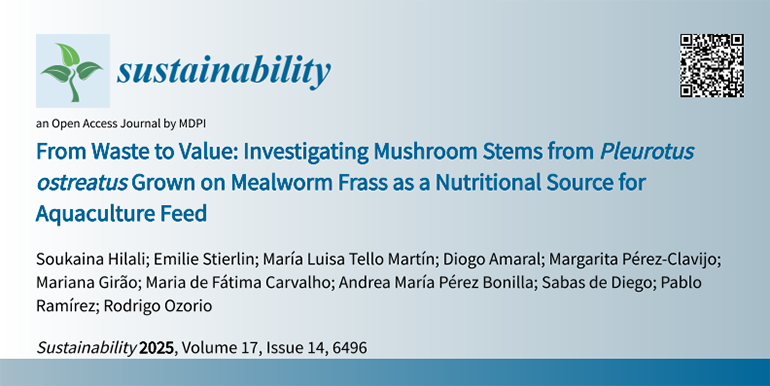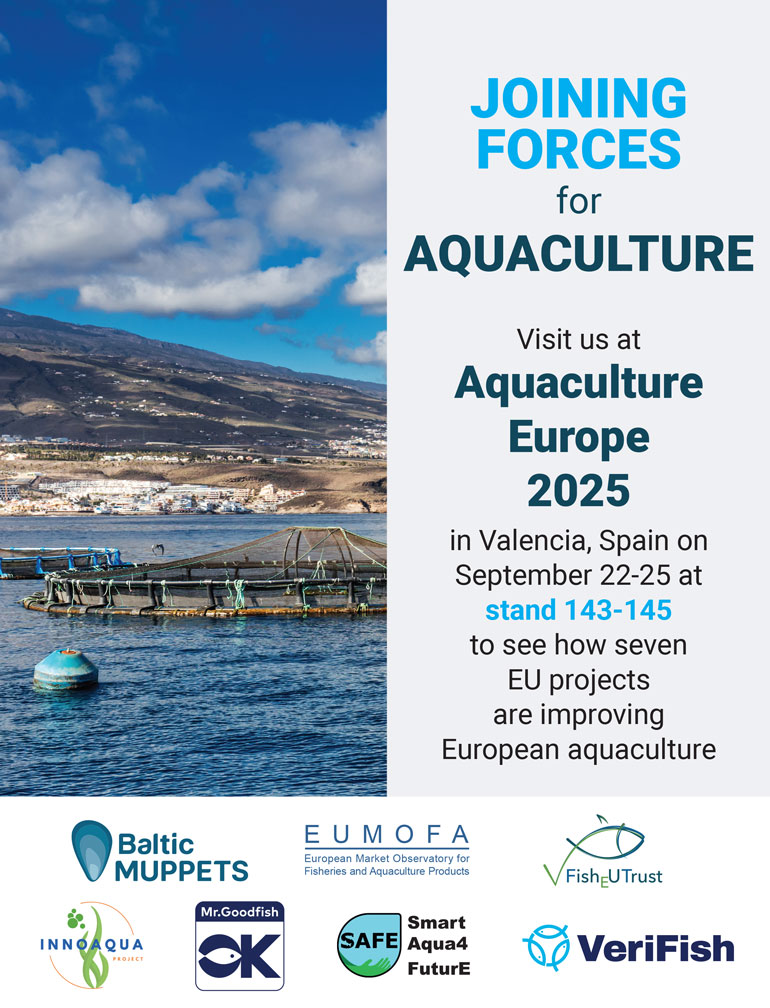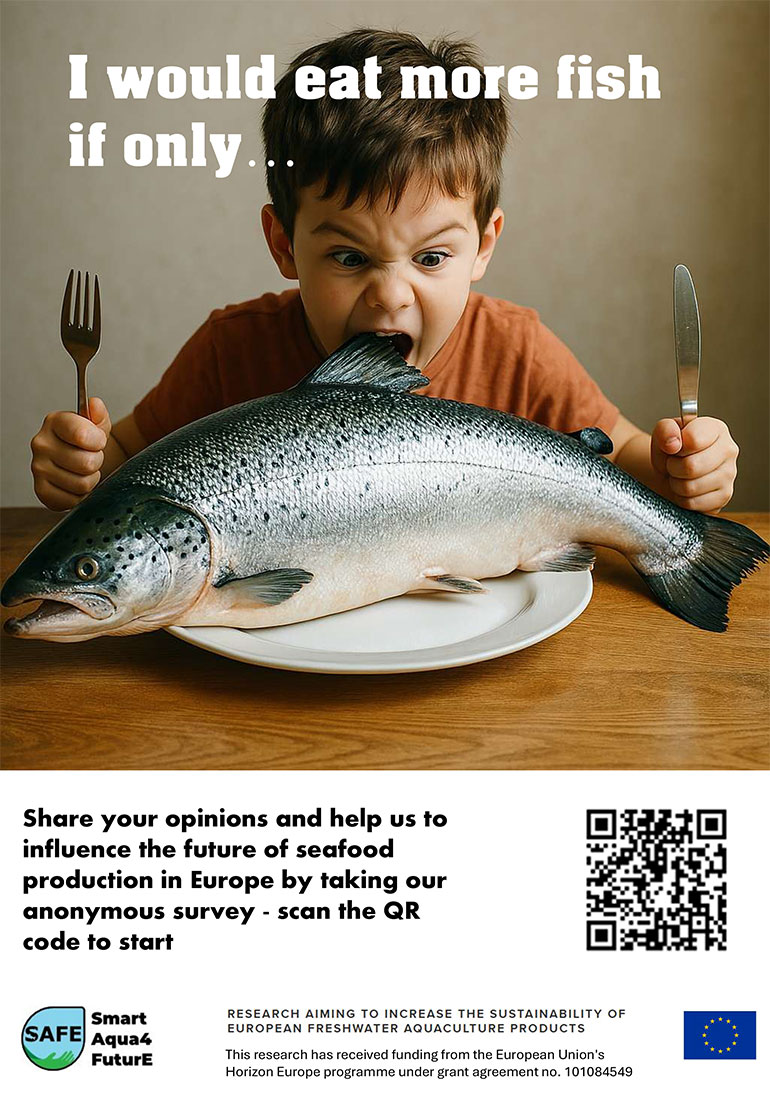
The SAFE project is excited to have published a publication, From Waste to Value: Investigating Mushroom Stems from Pleurotus ostreatus Grown on Mealworm Frass as a Nutritional Source for Aquaculture Feed in the Sustainability journal of MDPI. The study, which is authored by SAFE members, Celabor, CTICH, CIIMAR, and Tebrio, with contributions from School of Medicine and Biomedical Sciences (ICBAS) investigated mealworm frass as a sustainable substrate for Pleurotus ostreatus cultivation while valorizing mushroom stems as aquaculture feed. Mushrooms were grown on substrates containing 0–15% frass, and nutritional analyses were conducted on both fruiting bodies (for human consumption) and stems (for fish feed). Increasing frass levels significantly enhanced protein content, rising from 7.78% to 22.31% in stems and 24.74% to 30.99% in fruiting bodies. Lipid concentrations showed minor fluctuations while, in contrast, β-glucan content declined with high frass inclusion percentages. Essential amino acid levels peaked at 7.37% in stems (15% frass) and 8.08% in fruiting bodies (12.5% frass). Polyunsaturated fatty acids dominated the fatty acid profile, increasing with high frass levels. Mushroom bodies and stems were additionally investigated for their antimicrobial activity to determine whether they could offer protection against common fish and human pathogens. Antimicrobial assays revealed that dichloromethane extracts from stems grown on 12.5% and 15% frass exhibited inhibitory activity (inhibition zones of 10–11 mm) against Tenacibaculum maritimum, a microorganism that poses a significant threat to aquaculture. These findings highlight mealworm frass as a promising substrate for enhancing mushroom nutritional value while providing a sustainable, protein-rich feed ingredient for aquaculture.





